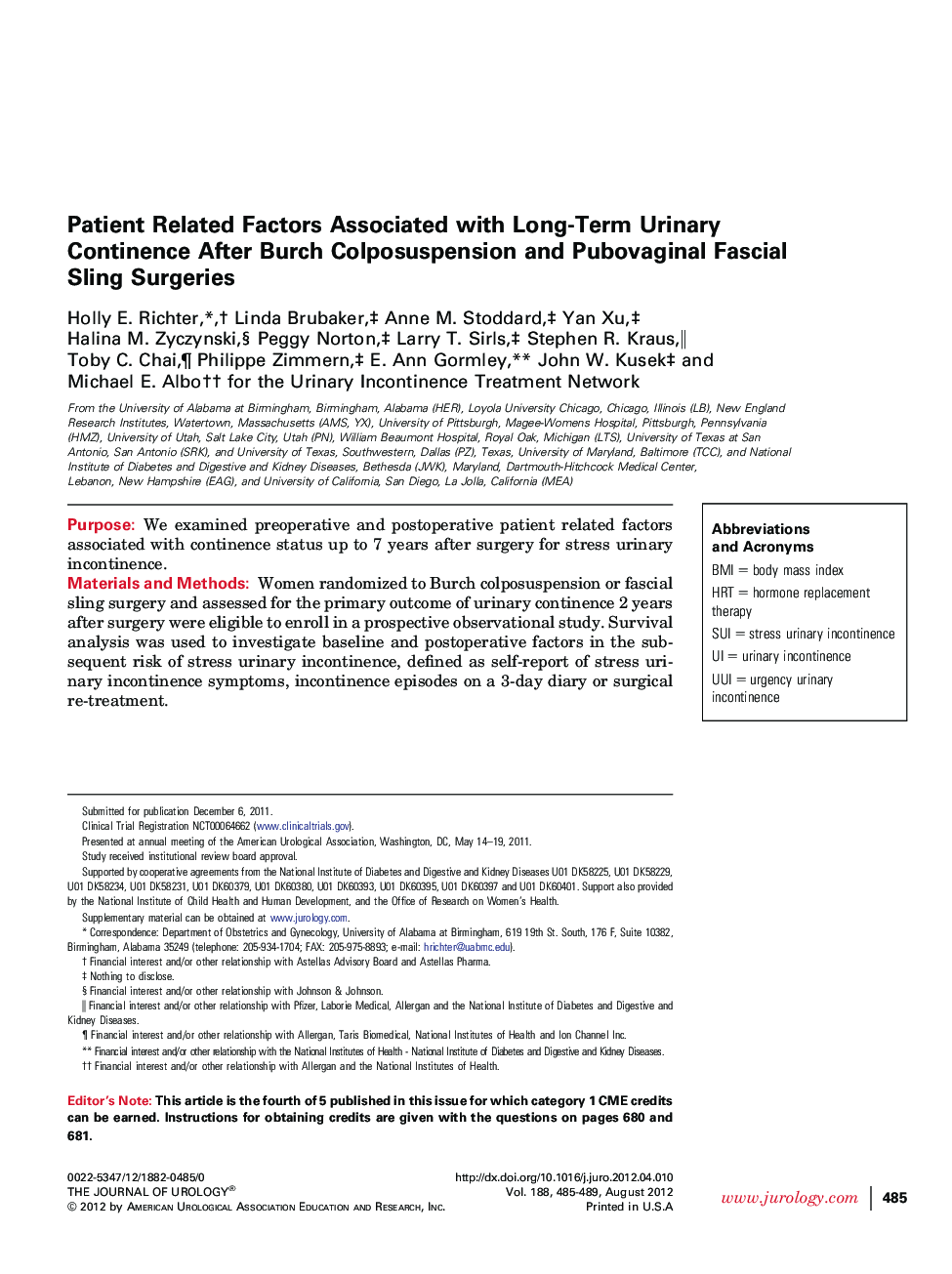| کد مقاله | کد نشریه | سال انتشار | مقاله انگلیسی | نسخه تمام متن |
|---|---|---|---|---|
| 3867105 | 1598932 | 2012 | 5 صفحه PDF | دانلود رایگان |

PurposeWe examined preoperative and postoperative patient related factors associated with continence status up to 7 years after surgery for stress urinary incontinence.Materials and MethodsWomen randomized to Burch colposuspension or fascial sling surgery and assessed for the primary outcome of urinary continence 2 years after surgery were eligible to enroll in a prospective observational study. Survival analysis was used to investigate baseline and postoperative factors in the subsequent risk of stress urinary incontinence, defined as self-report of stress urinary incontinence symptoms, incontinence episodes on a 3-day diary or surgical re-treatment.ResultsOf the women who participated in the randomized trial 74% (482 of 655) were enrolled in the followup study. Urinary continence rates decreased during a period of 2 to 7 years postoperatively from 42% to 13% in the Burch group and from 52% to 27% in the sling group, respectively. Among the baseline factors included in the first multivariable model age (p = 0.03), prior stress urinary incontinence surgery (p = 0.02), menopausal status (0.005), urge index (0.006), assigned surgery (p = 0.01) and recruiting site (p = 0.02) were independently associated with increased risk of incontinence. In the final multivariable model including baseline and postoperative factors, Burch surgery (p = 0.01), baseline variables of prior urinary incontinence surgery (p = 0.04), menopausal status (p = 0.03) and postoperative urge index (p <0.001) were each significantly associated with a greater risk of recurrent urinary incontinence.ConclusionsPreoperative and postoperative urgency incontinence symptoms, Burch urethropexy, prior stress urinary incontinence surgery and menopausal status were negatively associated with long-term continence rates. More effective treatment of urgency urinary incontinence in patients who undergo stress urinary incontinence surgery may improve long-term overall continence status.
Journal: The Journal of Urology - Volume 188, Issue 2, August 2012, Pages 485–489